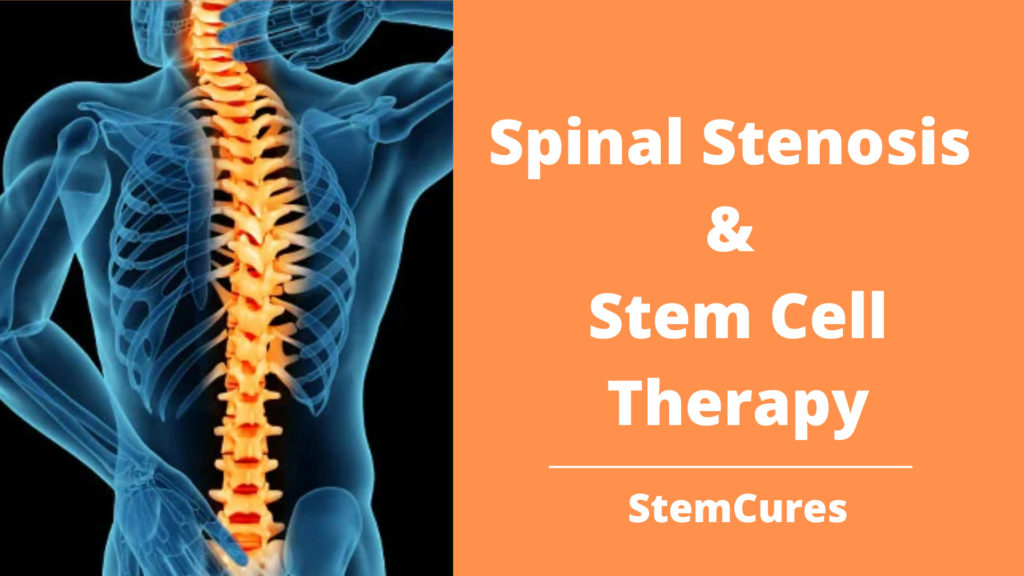Stem Cell Therapy for Spinal Stenosis
Stem cell therapy for spinal stenosis is a relatively new and experimental treatment that offers potential benefits in relieving the symptoms of spinal stenosis. The stem cells used in this procedure are typically taken from the patient’s fat or bone marrow, and then injected directly into the affected area.
Studies suggest that stem cell therapy may be effective in reducing pain, increasing mobility, and improving the quality of life for patients with spinal stenosis. However, the long-term safety and efficacy of this procedure are still being studied.
It is important to discuss all potential risks and benefits of stem cell therapy with your doctor before deciding if this is an appropriate option for you. Additionally, following your doctor’s instructions and being aware of any potential side effects is essential to ensure the best possible outcome. With the right care, stem cell therapy may be a safe and effective way to manage the symptoms of spinal stenosis.
- “The information provided in this article is not intended to replace the advice of your doctor. Always speak with your doctor about any medical concerns or questions you may have before undergoing stem cell therapy.”
What is spinal stenosis and how does it occur
Spinal stenosis is a narrowing of the spinal canal. This can cause pressure on the spinal cord and nerves. Spinal stenosis can occur anywhere in the spine but is most common in the neck and lower back.
What are the symptoms of spinal stenosis?
The symptoms of spinal stenosis vary depending on the location and severity of the narrowing. Common symptoms include:
- pain or cramping in the legs while walking
- numbness or tingling in the hands and feet
- balance problems
- weakness in the arms or legs
- difficulty controlling urine or bowel movements
What causes spinal stenosis?
Spinal stenosis is usually caused by age-related changes in the spine that cause wear and tear on its components (bone spurs, herniated discs). In some cases, other conditions such as bone diseases or tumors can also lead to spinal stenosis.
How is spinal stenosis diagnosed?
A doctor will typically diagnose spinal stenosis following a physical exam and review of the patient’s medical history. Additional tests may include imaging studies such as X-rays, MRI or CT scans to look for any signs of spinal narrowing.
What treatments are available for spinal stenosis?
Treatment options for spinal stenosis depend on the severity of symptoms and location of the narrowing. Non-surgical options may include medications, physical therapy and lifestyle changes (stretching exercises, weight loss). If these treatments are ineffective, surgery may be recommended to correct the underlying problem. Surgery typically involves removing portions of bone spurs or herniated discs that are causing pressure on nerves or the spinal cord. In some cases, other procedures such as spinal fusion or spinal laminectomy may be recommended.
How can stem cell therapy help treat spinal stenosis?
Stem cell therapy may be used to regenerate damaged tissues or improve overall function in the spine. Stem cells have the potential to differentiate into different types of cells, such as muscle and bone, which can help to restore normal spinal anatomy and physiology. Stem cell therapy has also been shown to reduce inflammation and pain associated with spinal stenosis. Additionally, stem cells can help to promote nerve regeneration and improve function in the spine. While research is still ongoing, there is evidence that stem cell therapy may be an effective treatment for spinal stenosis.
What are the risks associated with stem cell therapy for spinal stenosis?
As with any medical procedure, there are some risks associated with stem cell therapy. These include infection, bleeding, and nerve damage. Additionally, the effects of stem cell therapy may not be immediate or permanent. It is important to discuss all potential risks and benefits of stem cell therapy with your doctor before starting treatment.
Overall, stem cell therapy may be a promising treatment option for those with spinal stenosis. Discussing all potential risks and benefits with your doctor is the best way to determine if this is the right treatment option for you.
How much does stem cell therapy for spinal stenosis cost?
The cost of stem cell therapy for spinal stenosis varies depending on the treatment plan and the facility. Generally, the procedure can range in cost from a few hundred dollars to several thousand dollars. It is important to discuss the cost of treatment with your doctor and insurance provider in order to determine what, if any, financial assistance is available. Additionally, some clinics may offer payment plans or financing options.
In conclusion, stem cell therapy may be an effective treatment option for those with spinal stenosis. Before beginning treatment, it is important to understand the potential risks and costs associated with the procedure. Discuss all these factors with your doctor in order to make sure that this is the right path forward for you.
Are there any side effects of stem cell therapy for spinal stenosis?
Yes, there are potential side effects associated with stem cell therapy for spinal stenosis. These include infection, bleeding, and nerve damage. Additionally, the effects of stem cell therapy may not be immediate or permanent. It is important to discuss all potential risks and benefits of stem cell therapy with your doctor before starting treatment. It is also important to follow up with your doctor after the procedure in order to monitor any changes or side effects. Overall, although there are potential risks associated with stem cell therapy, it can be a very effective treatment option for those suffering from spinal stenosis.
What is the recovery time after stem cell therapy for spinal stenosis?
Recovery time after stem cell therapy for spinal stenosis can vary depending on the individual, as well as the extent of treatment. Generally speaking, patients can expect to return to their regular activities in 1-2 weeks post-treatment. However, it is important to follow up with your doctor and adhere to any specific instructions they provide regarding activity during recovery. Additionally, physical therapy may be recommended in order to help maintain strength and flexibility during recovery. Following your doctor’s instructions and taking care of yourself during this time will ensure a successful outcome following stem cell therapy for spinal stenosis.
Who should not undergo stem cell therapy for spinal stenosis?
Stem cell therapy is not recommended for those who are pregnant, have an active infection, or have any uncontrolled medical conditions. Additionally, people with a history of cancer should avoid this treatment as the safety and effectiveness in these populations has not been established. It is important to discuss all potential risks and benefits of stem cell therapy with your doctor before starting treatment in order to make sure that it is safe and appropriate for you. People who do not meet the criteria for stem cell therapy may benefit from other treatments such as physical therapy or medications. Ultimately, your doctor can help you decide which treatment option is best for you.
How long will the results of stem cell therapy for spinal stenosis last?
The results of stem cell therapy for spinal stenosis are not typically immediate or permanent. Generally, people can expect to see improvement in pain and mobility shortly after the procedure, however, this improvement may not necessarily be sustained over long periods of time. Additionally, physical therapy and lifestyle modifications may also help maintain any improvements acquired through stem cell therapy. Ultimately, it is important to discuss with your doctor what you can realistically expect from stem cell therapy and how long the effects will likely last. This will allow you to make an informed decision about whether or not this is the right option for you.
How do I know if stem cell therapy for spinal stenosis is right for me?
The decision to undergo stem cell therapy for spinal stenosis is a very personal one. Ultimately, it is important to talk with your doctor in order to determine whether or not this is the right treatment option for you. Your doctor can discuss all of the potential risks and benefits of this treatment, as well as alternative options that may be more appropriate for your situation. Additionally, they can advise on any pre-treatment tests or evaluations that may need to be done in order to ensure that you are an appropriate candidate for stem cell therapy. It is also important to consider your own individual health goals when making this decision and make sure that these align with what stem cell therapy can provide. By taking all of these factors into consideration, you will be able to make an informed decision about whether or not stem cell therapy is the right option for you.













